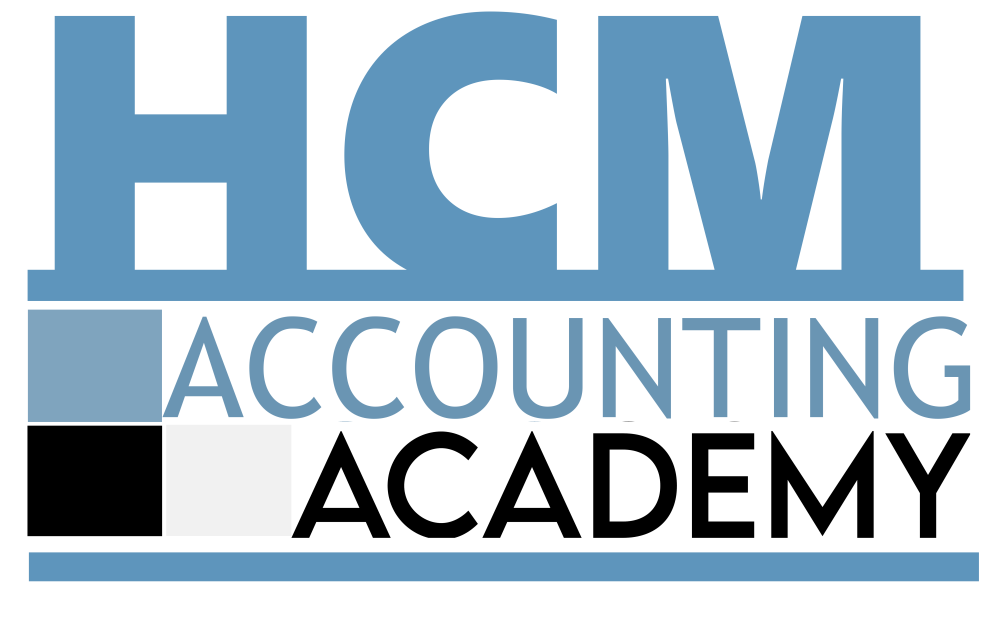
Professional Educational Programs combining interdisciplinary Accounting, Finance and Human Resources skills to develop corporate HR cross-cutting leadership acting in real time as the driving force of financial performance and aligning audit skills.
You access through this program skills certification course (knowledge and know-how) necessary for the dynamic of cross-cutting interaction of financial performance problem solving (PSP) dedicated to the employer and to HRM for the internal team and financial auditors and chartered accountants to meet the requirement to provide shareholders and investors with accurate and reliable Human Capital Added Value accounts.
The data to be provided to shareholders is based on the operational risk appetite threshold generating Economic Capital (EC).
The data for the non-GAAP governance and control of forward-looking management reporting of financial performance to be provided to shareholders are based on the expected operational risk appetite threshold generating economic capital (EC).
The HCHM certificate makes it possible to include HRMs among the beneficiaries of the services of financial analysts and Chartered Accountants. So far the offer of audit services has benefited:
• Chief Financial Officers
• Directors of listed companies
• Chief Executive Officers.
The practical phase of the workshop auditors program is carried out in the audit firm if the audit firm cannot associate it, as with company internships, with the support of internal teams of client companies registered in the HCMA certification program. CEOs, CFOs, HRMs, OMs and Operational units Heads
After purchasing a course, you can start and end it using the "HCM ACCOUNTING ACADEMY" link. The link provides you with the online course material, including the seminar text validated and published by the global scientific community. The exercise for the theoretical part of the Certificate is a summary of the seminar to be done at your own pace. For the practical part, as soon as you register, you will receive access codes to the Fintech HR module of the IT-IRM platform (Investor relationship management information technology) from your workstation for the real-time interaction workshop by the learning by doing in connection with other workstations. These are Financial Performance Problem Solving (PSP) Processes for which you are invited to process the operational risk loss mitigation data necessary for the economic capital (EC) of the company and the variable compensation aligned with the socio-economic indicators, factors or causes of operational risk on which each employee can act in real time.

I. Courses Name:
• HCM accounting Certificate for CEOs, CFOs, HRMs, OMs and Operational units Heads (Internal Team)
• HCM accounting Certificate for Chartered Accountants and financial Auditors.
Field of Study: Human Capital Management Accounting (HCMA)
II. Course Material:
• Online Material
III. Program outline:
• Economic capital is the amount of capital the firm should have to support any risks it takes on.
The measure of the risks has to be translated by decreasing requirements in economic capital according to the quality of the measurement and the management system. We also say Free Cash Flow. These are unencumbered means:”Unencumbered means free of legal, regulatory, contractual or other restrictions on the ability of the bank to liquidate, sell, transfer, or assign the asset. An asset in the stock should not be pledged (either explicitly or implicitly) to secure, collateralize or credit-enhance any transaction, nor be designated to cover operational costs (such as rents and salaries)” (Financial Stability Institute, October 2017).
All the companies are affected, because these are the economic benefits generated by the mitigation of operational risk losses. Operational risk is a significant risk that the institution must cover by own funds (cf. Laws issued from Basel III. Ex par. 52 of EU legislative acts No. 575/2013 June 26, 2013).
a) Losses related to Operational Risks are overloads of management accounts and non-revenue (unrealized products);
b) Operational risk losses have an obvious impact on the cost of the product, capital, competitiveness, income statement and the main risks of banks and their risk counterparties. Operational risk losses have an impact on:
• Credit counterparty risk or signature risk (customer risk and country risk);
• Transformation risk (large difference between the different maturities of receivables and debts) and liquidity risk (customers may withdraw more funds than expected and the bank does not have enough short-term cash flow to cope with it );
• Organizational risk (labor, equipment and environment);
• Market risk (errors that may be made when processing payments or settling transactions).
c) Human resources have a dominant effect on operational risks because they are malfunctions following maladjustment or failure as a result of procedures, people and internal systems. As a result, the operational risk losses are the same for all banks and all their clients regardless of their sector of activity (financial and non-financial companies, local authorities and public services in the broad sense).

IV. Learning and FINTECH objectives:
A/ At the end of this course, you will have acquired the skills to perform tasks of managing the added value of the human capital of your workstation and for accountants and auditors the ability to support the management of the added value of human capital (Total Paid Workforce).
This means advising and auditing the real-time execution of the tasks of the Financial Performance Problem Solving (PSP) processes for which each member of the internal team is invited to process the necessary operational risk loss mitigation data.
The chartered accountant and the financial auditor learn at the same time as the internal team how,
(1) At the level of the CEO, advise and audit the processing of forecast management data for economic capital (3-year plan) to be proposed to the board of directors on the basis of the added value of human capital (total paid workforce).
(2) At the CFO level, advise and audit the calculations of anticipation and mitigation of operating losses from data stored in the internal databases of unexpected losses (UL) and expected losses (EL) and execute financial planning based on expected losses taking into account absolute VaR and risk appetite threshold.
(3) At the HRM level, advise and audit surveys to anticipate the deterioration of the social situation in order to provide the data (example the weighting grid of socio-economic indicators) to be taken into account by the financial director in order to program motivation and more effective mobilization of all employees whose variable salaries are indexed to financial performance objectives planned for each socio-economic indicator.
This includes:
(a) Incorporate corporate learning to manage staff turnover and have data on knowledge gaps to identify recruitment needs.
(b) Use the internal dashboard to monitor and support the improvement of the financial performance and purchasing power of employees indexed on five socio-economic indicators which are levers on which each employee can act in real time.
(c) Use the internal scorecard to take immediate and effective action to address risks based on six key areas of socio-economic improvement:
• Working conditions (Workplace Wellbeing or Health and Wellbeing in the Workplace)
• Work organization,
• Consultation, communication, coordination (3C),
• Integrated training,
• Working time management and
• Strategic implementation.
(d) Carry out periodic surveys on “Psychosocial Risks” to provide alert data on HR dashboards based on six axes recommended by the international panel of experts ( “Nasse-Légeron report”, 2009) to identify, quantify and monitor psychosocial risks:
● Work requirements
● Emotional requirements
● Autonomy
● Margins of maneuver
● Social and labor relations
● Different value conflicts
● Employment and wages insecurity.
(4) At the level of the OM (Operational Management) and the heads of operational units,
(a) Advise and audit the organization of operational units and coordinate the capture of daily incidents related to indicators, factors or causes of operational risk losses; in particular to avoid the error which until now consisted in focusing employees on the most worrying socio-economic indicator.
Socio-economic analysis and the work of experts from 2 American universities (Georgia and New Jersey) and 3 European universities (Cambridge, Malta and Frankfurt) with Lelecorp (cf. ISACA Journal, USA, Vol. 6, 2013 and Vol. 3, 2016) have identified five indicators whose daily data collected by operational units are articulated and weighted to manage the financial performance of HR in real time. Running structurally, each indicator leading the others, the management account indicators below must be taken together in the weighting system:
• Absenteeism loss mitigation reporting accounts;
• Accounts for the mitigation of loss related to work accidents;
• Reporting accounts on the mitigation of losses linked to quality defects;
• Reporting accounts on the mitigation of losses linked to direct productivity gaps (overtime and overconsumption of materials);
• Reporting accounts on the mitigation of losses linked to gaps in know-how (including lack of versatility)
These indicators are levers on which each employee can act in real time.
• The automated weighting system by the Fintech IT-IRM platform avoids the error consisting until now of focusing management on the indicators whose effects are the most visible: for example absenteeism and quality defects .
(b) Advise and audit the processing of e-bulletins (digital variable salary bulletins) paying for the financial performance of employees indexed on socio-economic indicators:
• Weekly entry of data to be processed to pay variable wages on five socio-economic financial performance indicators mitigating operational risk losses according to the risk appetite threshold and finally;
• Ability of heads of operational units to train employees in particular to download, to read, to understand, to evaluate and adopt methods to improve their financial performance as well as the associated variable salary.
B/At the end of this course, you will have acquired the ability to assess and support the integration of interaction skills governing the financial performance problem-solving process (PSP) with other skills in group dynamics and organizations.
This includes:
(a) Leadership development skills:
• Coaching,
• Accountability,
• Change Management,
• Influence and Negotiation,
• Communication.
(b) Team Training objectives:
• Improving communication,
• Making the workplace more enjoyable,
• Motivating a team,
• Getting to know each other,
• Getting everyone “onto the same page,” including goal setting,
• Teaching the team self-regulation strategies,
• Helping participants to learn more about themselves (strengths and weaknesses),
• Identifying and utilizing the strengths of team members,
• Improving team productivity,
• Practicing effective collaboration with team members.

C/ After completing this course, you will have acquired the skills to provide non-GAAP (non-generally accepted accounting principles) human capital added value (Total paid workforce) financial reports to shareholders (Governance reports ).
(a) Understand and provide non-GAAP information through human capital management accounting making the dynamics of managing financial performance remunerated by fixed and variable salaries understandable.
Non-accounting performance indicators, often called “non-GAAP measures”, are performance measures that are not defined by accounting regulations.
• Unlike financial accounting, human resource-based management accounting or enterprise risk management (ERM) accounting is the operational framework for complying with International Financial Reporting Standards (IFRS) 3R (business combinations). companies) and “FASB ASC Topic Equivalent: 805-10” which explicitly prohibits its recognition as an intangible asset.
As indicated by the socio-economic indicators above, the non-Gaap extra-accounting practice is management accounting (cost accounting or business accounting) which essentially takes two forms:
• Indicator accounts not strictly defined by GAAP,
• Application of accounting principles that do not comply with official GAAP, in particular the weighting of socio-economic indicators within the reach of the total paid workforce.
You will thus have learned how Human Resources as the “Driving force” of the Economic Capital (EC) generated by the mitigation of operational risk losses impact the forward looking management of the extra-accounting indicators of financial performance that are provided usually to shareholders:
• Gross Margin,
• EBITDA (Earnings Before Interest, Taxes, Depreciation and Amortization),
• Current Operating Result,
• Operating result,
• Gross Operating Income,
• Operating profit,
• EBIT (Earnings Before Interest and Taxes),
• Current Result,
• FCF (Free Cash Flow),
• Self-financing Capacity.
HCM accounting therefore provides the skills that were lacking until now to meet this requirement:
• The non-GAAP information in a company’s communications with investors provides insights into how management views their performance. For public companies, this information provides financial statement users with a picture of the organization’s financial position and performance (Marc Siegel, FASB Member, ''For the Investor: The Use of Non-GAAP Metric'', 2014 Q4).
(b) Ability to integrate capital dynamics
Traditionally, capital is the set of goods, from a firm’s own funds, capable of generating income. The monetary value of the whole indicates the amount of capital of a company. It now appears that it is necessary to go beyond this conception of capital, which is better suited for start-ups than to firms with a history. The appropriate definition of capital is therefore this: what one has or can have available to generate income. Hence the requirement to process, record and provide data from human capital added value accounts, i.e. from Total Paid Workforce.
• To do this, we have to learn to think and say “human capital added value” in order to integrate enterprise capital as acquired value to generate future economic benefits.
(c) Who Reads HCM Accounting Reports ?
Obviously the same people as those who read the governance and compliance reports:
• Outward-oriented reports are generally part of a larger compliance audit that an organization undergoes as part of a request or review required by regulators.
Internal compliance reports are read by many different groups within the organization, including board members, shareholders or certain stakeholders and the stock exchange body.
The details of a compliance report could also be of concern to a selected department whose work with new regulations informs its business relationships or future plans.
Finally, lessons learned from a compliance report can be used to educate the entire workforce on the importance and need to follow standard procedures and policies.
(d) HCMA program to achieve Forward-looking management objectives through non-GAAP accounts:
1. Under the leadership of the CFO, as usually, the internal team plans, programs and monitors the performance of sales and services, the results of which are presented for GAAP reporting in the form of financial statements.
2. Under the leadership of the HR Manager the internal team plans, programs and manages the internal cross-cutting financial performance, the results of which are presented in the form of non-GAAP accounts supplementing the usual governance reports to adapt them to the provisions of the laws governing remuneration in the context of 100% LCR considering the aggravating effect of the COVID-19 deficit.
D/HCM accounting Certification:
• Program level: Overview
• Prerequisites: None
• Advance preparation: None
• Type of delivery method: Self Study and learning-by-doing interaction workshop at the workstation
• Final certification expiration date: The program participant will have three months from the date of purchase to complete the course and obtain the HCM accounting certificate based on its participation in the program for 90 days.
